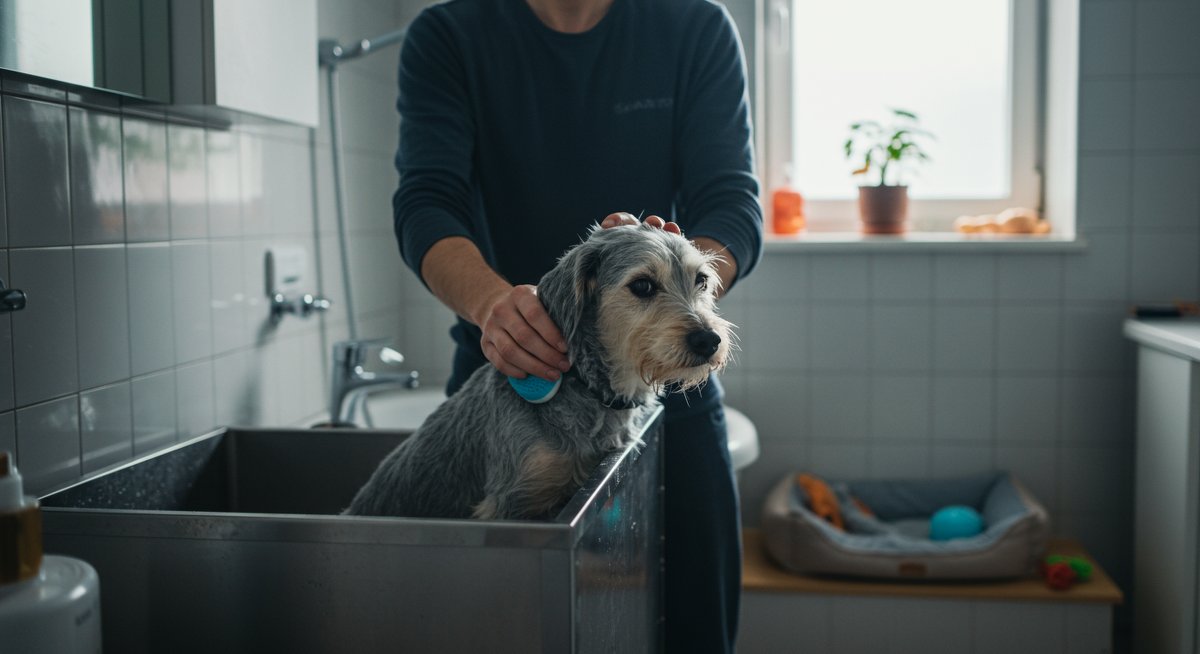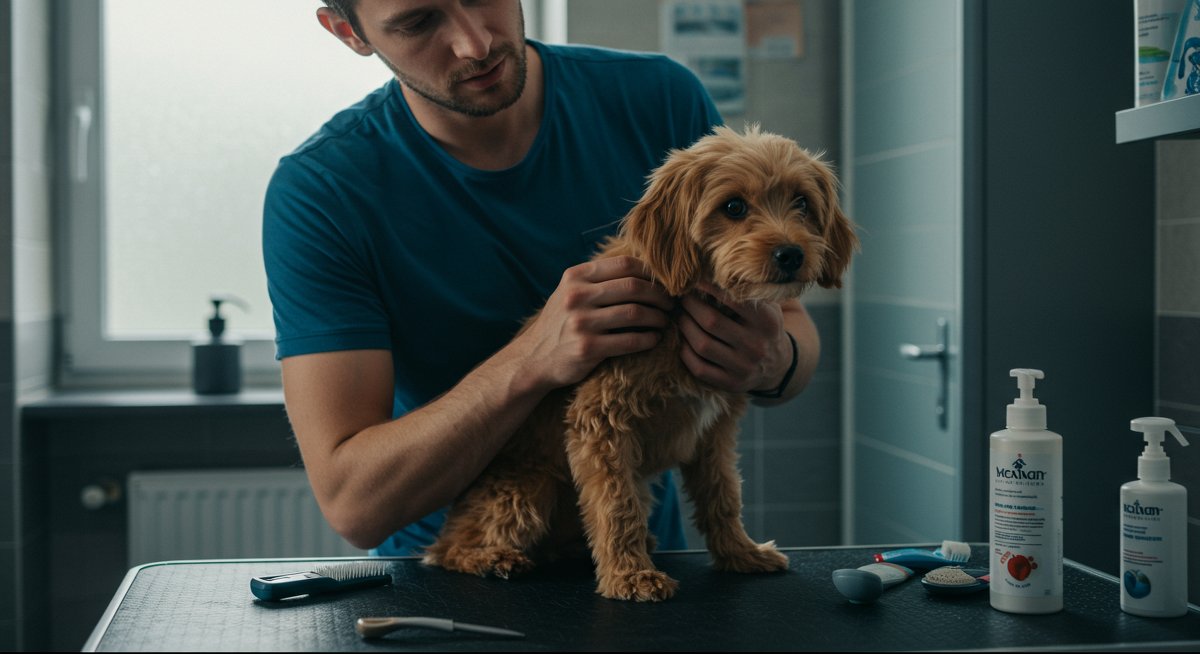
Understanding Dog Allergies: A Guide for Dog Owners
Is your dog constantly scratching, licking, or chewing at their skin? These could be signs of dog allergies, a common issue that can cause significant discomfort for our canine companions. As a dog owner, it's essential to understand the causes, symptoms, and effective solutions for these allergies to help your dog find relief and live a happier, healthier life. This guide will provide you with the essential knowledge to identify and manage dog allergies, from recognizing the first signs to implementing preventative care strategies and knowing when to seek veterinary advice. We will cover common allergens, practical solutions, and how to create a comfortable environment for your dog.
Common Symptoms of Dog Allergies
Dog allergies can manifest in various ways, but certain symptoms are more common than others. Recognizing these signs early can help you take proactive steps to alleviate your dog's discomfort. The most common symptoms include:
- Itching: This is often the most noticeable sign, with dogs scratching, licking, or chewing excessively at their skin. Itching can be localized to certain areas or affect the entire body. Example: A Labrador Retriever constantly scratching its ears and paws.
- Skin Irritation: Redness, inflammation, and bumps or lesions on the skin are common. These can be caused by scratching, biting, or the allergic reaction itself. Example: A Bulldog with red, inflamed skin around the belly and armpits.
- Hair Loss: Excessive scratching and licking can lead to hair loss, creating bald patches. The location of hair loss can sometimes indicate the allergen. Example: A German Shepherd losing hair on its hindquarters and flanks.
- Ear Infections: Allergies can cause recurrent ear infections, as the ears are sensitive and prone to inflammation. Example: A Cocker Spaniel suffering from repeated ear infections and scratching its ears frequently.
- Sneezing, Runny Nose, and Watery Eyes: Some dogs may exhibit respiratory symptoms, similar to human allergies. Example: A Beagle sneezing and rubbing its face frequently.
It's important to note that these symptoms can also be caused by other conditions, such as fleas, infections, or other skin diseases. If you notice any of these signs, it's a good idea to consult with your veterinarian to get a proper diagnosis.
Identifying the Causes: Common Allergens
Dog allergies can be triggered by a variety of allergens, which can be broadly categorized into environmental, food-related, and flea-related. Identifying the specific allergen is key to effective management. Here are some of the most common causes:
- Environmental Allergens: These include pollen, mold, dust mites, and other airborne particles. These allergens are seasonal and can cause symptoms during specific times of the year. Example: A Golden Retriever experiencing severe itching during the spring due to pollen allergies.
- Food Allergens: Certain ingredients in dog food, such as beef, chicken, dairy, wheat, and soy, can trigger allergic reactions. Food allergies often cause skin and gastrointestinal issues. Example: A Dachshund developing itchy skin and digestive upset after eating food containing beef.
- Flea Allergies: Flea saliva is a potent allergen for many dogs. Even a few flea bites can cause intense itching and skin irritation. Example: A Yorkshire Terrier constantly scratching and biting at its hindquarters due to a flea allergy.
- Contact Allergens: Certain substances, like cleaning products, specific types of grass, or materials used in dog beds, can cause contact allergies. Example: A Boxer developing skin irritation after lying on a new, chemically-treated dog bed.
Expert Tip: Keep a journal of your dog's symptoms, diet, and environment. This can help you and your vet identify potential allergens.
Effective Solutions and Treatments
Once you've identified the potential allergens, several treatment options can help alleviate your dog's symptoms and improve their quality of life. The best approach often involves a combination of strategies.
- Veterinary Consultation and Diagnosis: The first step is always a visit to your veterinarian, who can perform allergy tests (such as skin tests or blood tests) to pinpoint the specific allergens. Your vet can also rule out other conditions and recommend appropriate treatments. Example: A veterinarian performing an intradermal skin test to identify environmental allergies in a mixed-breed dog.
- Medications: Your vet might prescribe medications to control itching and inflammation. These can include antihistamines, corticosteroids, or newer medications like Apoquel or Cytopoint. Example: A vet prescribing Apoquel to a Shih Tzu with severe allergies to reduce itching.
- Dietary Changes: If a food allergy is suspected, your vet might recommend an elimination diet, where you feed your dog a novel protein source or a hydrolyzed protein diet. These diets can help identify and eliminate food allergens. Example: Switching a Beagle to a limited-ingredient diet with duck and potato to identify and avoid potential food allergens.
- Environmental Control: Reduce exposure to environmental allergens by keeping your home clean, using air purifiers, and avoiding walks during peak pollen times. Regular vacuuming and washing of bedding can help reduce dust mites. Example: Using an air purifier with a HEPA filter to reduce airborne allergens in a Pomeranian's living area.
- Topical Treatments: Shampoos, sprays, and creams containing soothing ingredients like oatmeal, aloe vera, or medicated ingredients can relieve itching and soothe irritated skin. Choose products specifically designed for dogs. Example: Using a hypoallergenic shampoo with oatmeal to bathe a German Shepherd with skin allergies.
Preventative Care and Proactive Measures
Preventative care plays a crucial role in managing dog allergies and preventing flare-ups. These measures can minimize your dog's exposure to allergens and keep them comfortable.
- Flea and Tick Prevention: Use a vet-recommended flea and tick preventative year-round to prevent flea allergy dermatitis. This is a crucial step in any allergy management plan. Example: Administering Frontline Plus monthly to a Jack Russell Terrier to prevent flea infestations.
- Regular Grooming: Brushing your dog regularly can remove allergens from their coat and skin. Bathing with a hypoallergenic shampoo can also help. Ensure you use a dog-specific shampoo. Example: Brushing a long-haired Collie several times a week to remove allergens and keep their coat healthy.
- Clean Living Environment: Regularly clean your home, vacuuming frequently, and washing your dog's bedding in hot water to eliminate allergens like dust mites. Example: Washing a French Bulldog's bedding weekly to reduce exposure to dust mites and other allergens.
- High-Quality Diet: Feeding your dog a balanced, high-quality diet can support their overall health and strengthen their immune system. Look for foods with limited ingredients if your dog has a sensitive stomach. Example: Feeding a Hill's Science Diet food to a Miniature Pinscher to promote a healthy coat and skin.
- Monitor Outdoor Exposure: Limit your dog's exposure to potential allergens by avoiding walks during high-pollen times and wiping their paws and coat after outdoor activities. Example: Wiping a Pug's paws and coat after each walk to remove pollen and other environmental allergens.

When to Consult Your Veterinarian
While many dog allergy symptoms can be managed at home, it's essential to know when to seek veterinary attention. Contact your vet if you notice any of the following:
- Severe Symptoms: Intense itching, constant scratching, or self-inflicted wounds.
- Signs of Infection: Pus, redness, swelling, or a foul odor from the skin or ears.
- Respiratory Distress: Difficulty breathing, coughing, or wheezing.
- Worsening Symptoms: If your dog's symptoms don't improve with home care or over-the-counter treatments.
- Changes in Behavior: Lethargy, loss of appetite, or other unusual behaviors.
Expert Tip: It's better to consult your vet sooner rather than later, especially if you are unsure about the cause of your dog's symptoms. Early intervention can prevent the condition from worsening.
Recommended Products and Resources
Here are some recommended products and resources to help manage dog allergies:
- Hypoallergenic Shampoos: Products like those containing oatmeal, aloe vera, or medicated ingredients. Look for those specifically designed for dogs. Example: Using a hypoallergenic shampoo with oatmeal to gently cleanse and soothe irritated skin.
- Veterinarian-Recommended Food: If you suspect a food allergy, switch to a vet-recommended diet. The vet will guide you to the best food for your dog. Example: Switching to a limited-ingredient diet with a novel protein source, such as duck or salmon, under veterinary guidance.
- Air Purifiers: Air purifiers with HEPA filters can help remove airborne allergens from your home, improving your dog's breathing. Example: Using an air purifier in the room where your dog spends most of their time.
- Allergy Testing Kits: Available from your vet to determine specific triggers. Example: Having your vet conduct skin or blood tests to pinpoint the specific allergens causing the reactions.
- Reliable Online Retailers: Chewy.com provides a variety of these options.
Next Steps in Managing Dog Allergies
Managing dog allergies requires patience, consistency, and a proactive approach. By understanding the causes, recognizing the symptoms, and implementing effective solutions, you can significantly improve your dog's comfort and well-being. Remember to consult with your veterinarian for a proper diagnosis and treatment plan. Regular check-ups, consistent care, and a commitment to your dog's health are key to a happy, itch-free life for your canine companion.